Armored vehicles of Germany in the Second World War. Stug Assault Gun
Five experimental zero-series machines left the shop as early as 1937. A slightly modified PzKpfw III Ausf B chassis was used as a base for creating these machines. In a completely closed low-profile fixed combat wheelhouse, a short-barreled StuK 37 L / 24 gun of 75 millimeters was installed. The gun relative to the longitudinal axis of the machine was shifted to the right; therefore, the driver's seat was in the same place. The difference was that the driver’s seat was now in front of the crew compartment. Along its walls were located ammunition which included 44 projectile. A machine gun for firing at infantry was not envisaged. In general, this car had a rather low silhouette and good booking. 250-strong engine "Maybach" HL 108TR allowed to develop ACS speed up to 25 km / h, but for a combat vehicle designed to directly support the infantry, this speed was enough.
Since the cuttings and hulls of the experienced SAUs were made of non-armored steel, the assault guns could not take part in the hostilities, so after completing the comprehensive testing program that took place at the Kummersdorf training ground, they were transferred to an artillery school where they were used as training machines before the start of 1941 year
In February 1940, after some changes were made to the design, the first batch of 30 cars was produced at the Daimler-Benz plant, which differed from the experimental ones mainly in the engine and chassis. As a base for self-propelled guns used Tanks PzKpfw III Ausf E / F, the machine was driven by the Maybach HL 120TR engine, the frontal armor was up to 50 millimeters thick. These self-propelled artillery mounts on March 28, 1940 received the official designation "7.5 cm Strumgeschutz III Ausf A" (abbreviated as StuG III). About a month later, four batteries of assault guns of this modification took part in hostilities in France. According to the results of these battles, the vehicles received the highest ratings from the crews and from the command.
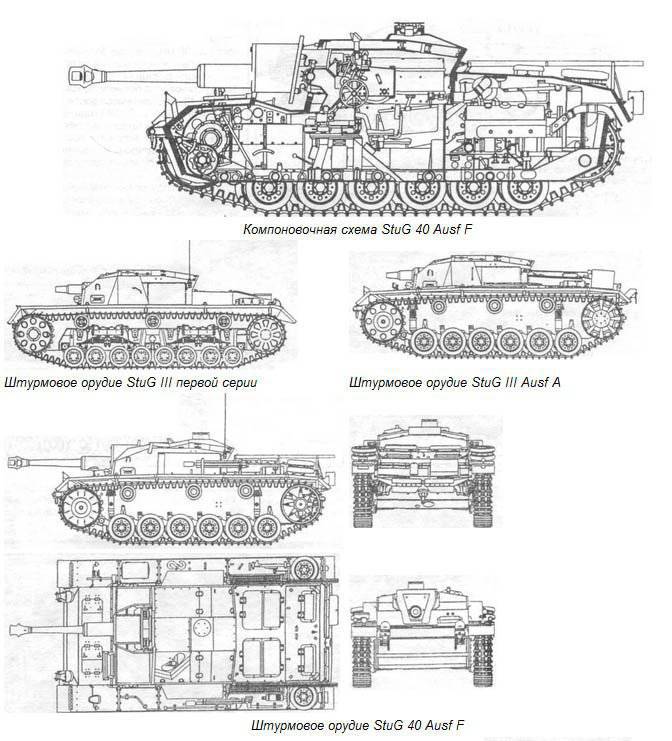
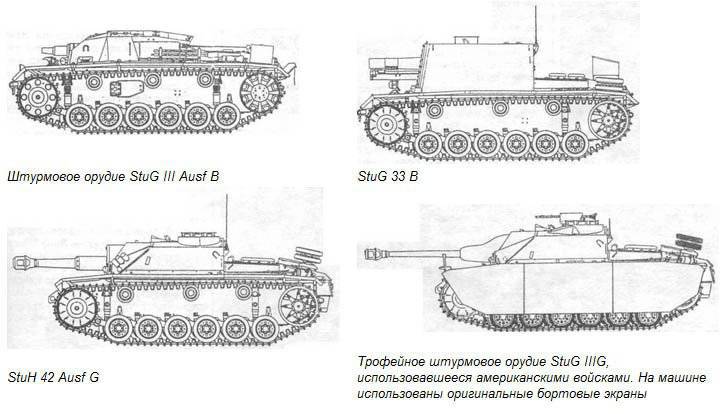
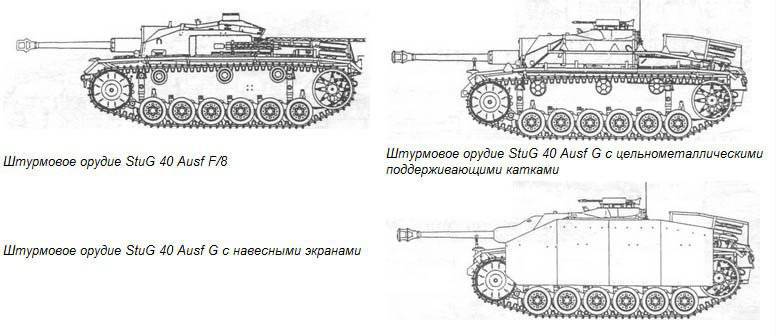
Soon, the mass production of the self-propelled guns of the StuG III was transferred from the Daimler-Benz overloaded with military orders to Almerkish Ketten Fabrik (Alkett). The volume of the monthly issue was 30 machines, which made it possible to introduce the StuG III self-propelled guns into the 1940 series in 184, and to produce 548 units by the end of next year. these highly needed front cars.
Self-propelled artillery StuG III of various modifications were the most massive tracked combat vehicles of the German army during the Second World War. In the 1942 year, after arming 75-mm long-barreled guns, which had high armor-piercing characteristics, they essentially became the main anti-tank weapon of the Wehrmacht. At the same time, the functions of the assault gun were transferred to the StuH 42 assault howitzer developed on that base of the same machine and differing from the ACG StuG III only by the installation of a high-explosive fragmentation gun. In total, from February 1940 to April 1945, more than 10,5 thousand StuH 42 assault howitzers and StuG III guns were manufactured at the MIAG and Alkett factories.
The StuG III assault rifle, like all German tanks produced for a long time, was continuously upgraded in the production process, not only to improve the fighting qualities, but also to reduce the cost and simplify the design. As a result of making a large number of changes to the latter, (changes, as a rule, were not very significant), eight modifications were seen. It makes no sense to list all the innovations, we dwell only on the main ones, which seriously affected the fighting qualities of self-propelled guns.
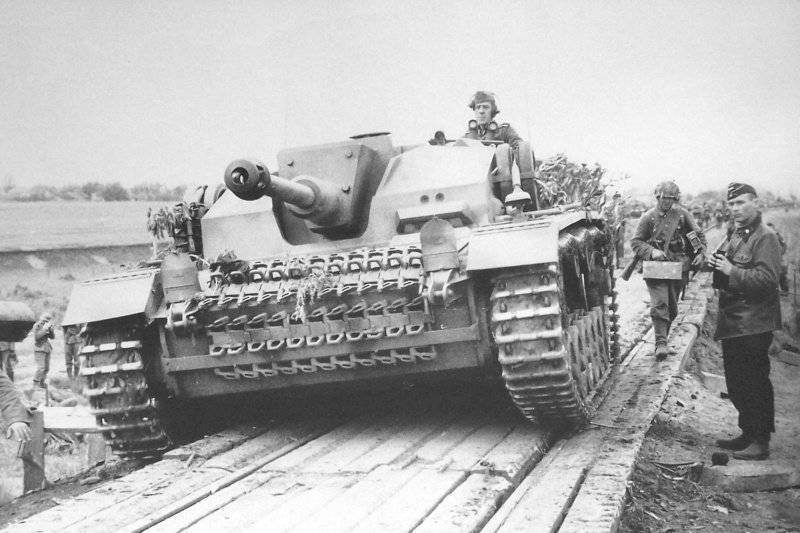
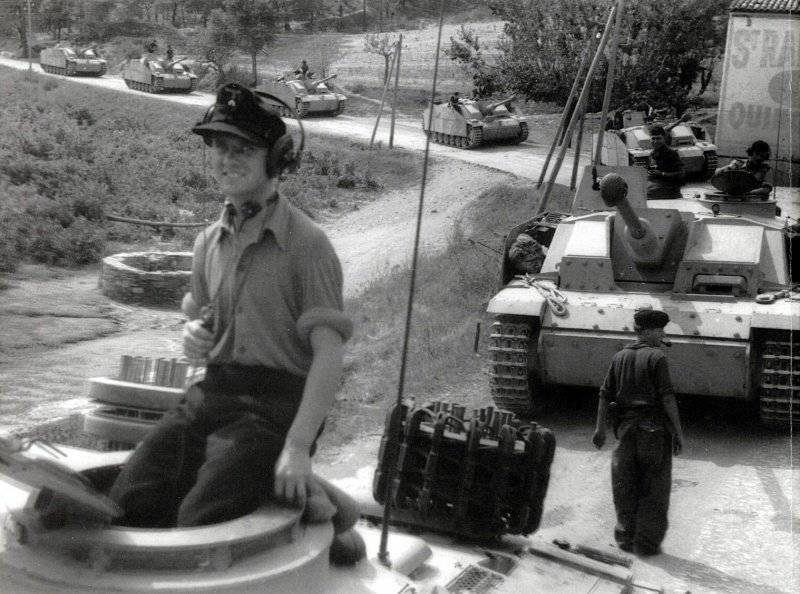
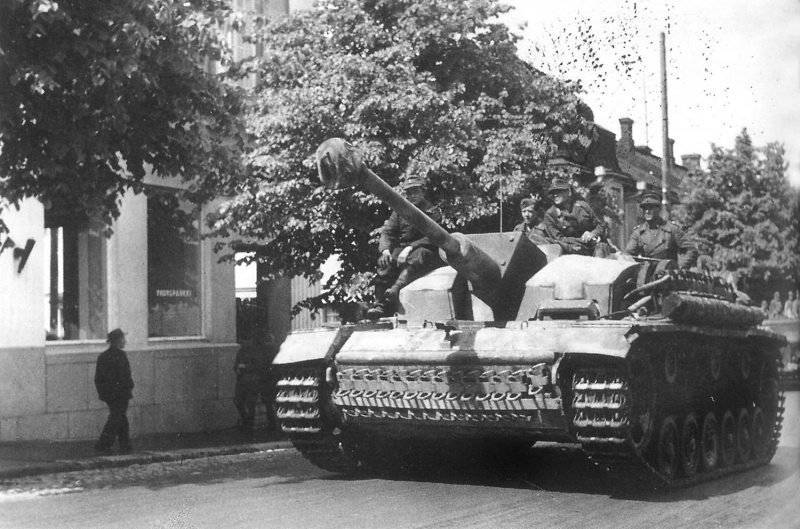
Consider first of all the evolution of the weapons SAU StuG III. On the first assault guns, a short-barreled StuK 38 L / 24 gun with a barrel length of only 24 caliber was installed. The main armament of the B, C, D and E modifications was the same. If the task of providing fire support to the infantry was by force, then it almost did not work to destroy the enemy’s tanks. Gun fire was effective only at close distances. After the German attack on the USSR and the collision with the KB-1, KV-2 and T-34 tanks having good defense, the situation deteriorated even more, therefore the StuG III F modification began to install the long-barreled StuK 40 L / 43 gun with greater efficiency. The self-propelled version of the StuG 40 Ausf F / 8 (after this modification, the StuG III was called that way) was installed gun StuK 40 L / 48 has even more power. Self-propelled guns of the latest, most advanced and most massive modification of the Ausf G. were armed with the same weapon. Also, with the start of the production of assault guns that had long guns in service, which fell into the repair of earlier versions of the machine, they also began to re-equip them. The installation of effective anti-armor guns has significantly changed the situation, turning the ACS modifications F, F / 8 and G into a very formidable weapon and the main anti-Wehrmacht. In order to provide the troops with the necessary fire support, they decided to start the production of a new self-propelled artillery installation armed with a suitable for these purposes howitzer leFH 18 L / 28 caliber 105 millimeters. In March 1943, it unfolded. The new self-propelled artillery gun, which received the designation StuH 42, was identical in its design to the modifications F, F / 8, G. The gun ammunition consisted of 36 shots. Until the end of the war, based on the PzKpfw III Ausf G, they released 1299 machines, on the basis of the PzKpfw III Ausf F, also 12.
As the experience of combat showed, in certain situations machine-gun armament for close combat is no less important for SAU than cannons. And if the original machine gun to deal with the enemy's manpower was not provided for, then, starting from modification E, they began to install it. On StuG III modifications F and subsequent modifications of the machine gun carried on the roof. The weapon had a limited firing angle, as it was installed in a protective shield in the slot. But the self-propelled guns of the last series of the G modification were equipped with a circular-rotation machine gun with remote control. This modification, undoubtedly, was a step forward to save many German tankers.
Simultaneously with the improvement of the SAU armament, work was done to increase the armor protection of the machines, as a result of which the thickness of the cutting armor and the frontal part of the hull was increased to the 80 millimeters on the latest, most mass modifications. On already released SAU protection increased by hanging additional armor plates. Also, ACS StuG III, starting with 1943, began to be equipped with onboard screens, which protected the back of the chassis and side from cumulative projectiles, as well as bullets of anti-tank guns. This led to an increase in the mass of the combat vehicle and to a deterioration in maneuverability, which was already unimportant.
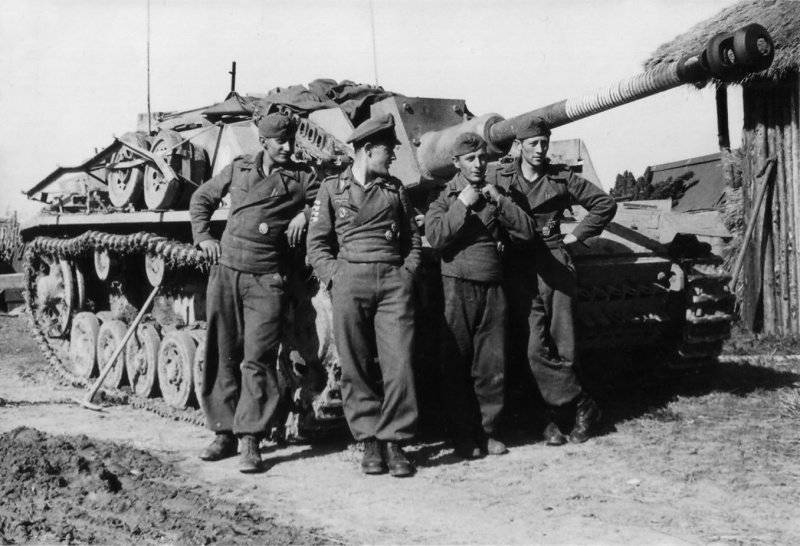
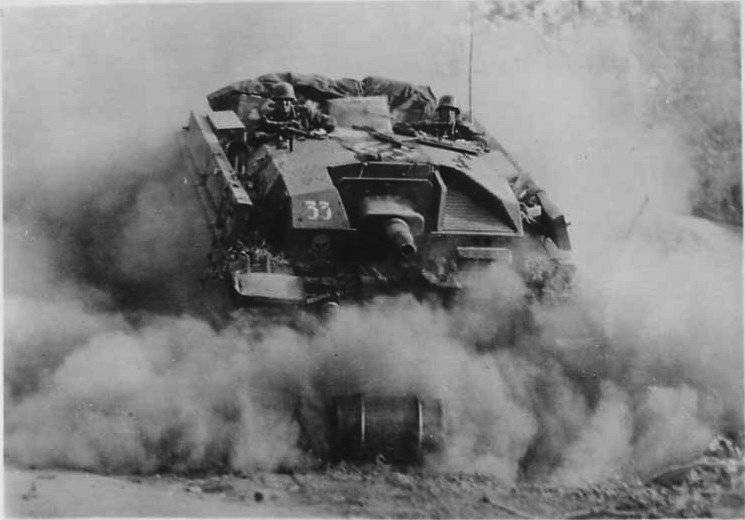
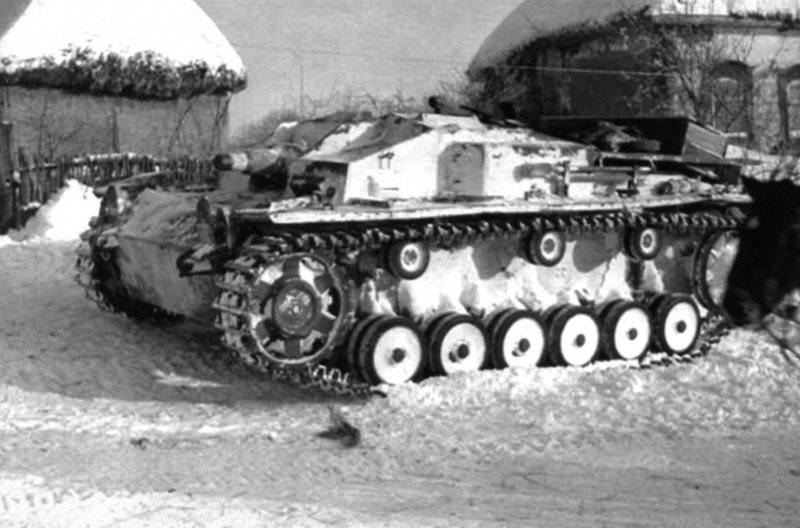
The remaining changes that were made during the years of mass production concerned, as a rule, the form of cutting, aiming devices, the number of hatches, and so on. Outwardly, the StuG 40 Ausf G assault rifle stood out with the commander's turret that appeared on it and the new cast mask of a cannon (later called the “pig's nose” for its characteristic form), which was installed from November 1943.
The first StuG III Ausf A assault guns received their baptism of fire in 1940, in France, where they immediately proved themselves very well. In a small number of vehicles of modification B participated in the Balkans in the hostilities, however, a truly serious test was waiting for them in the summer of 1941. The last battles in which StuG III Ausf A and B took part were held at Stalingrad in 1942-1943. Only in the training units, several units of assault guns of the first modifications were able to survive to 1944. Modifications C and D on the battlefield appeared in the summer of 1941 g, but by winter their number had decreased significantly, and subsequently they were rearmed with a long-barreled gun. After that, they were used until the end of World War II.
The latest modification of the StuG III Ausf E equipped with a short-barreled 75 mm caliber appeared in the autumn of 1941, although the weakness of such weapons by this time became quite obvious. The creation of this modification was caused by the need for combat special vehicles of the commanders of the assault divisions. To this end, due to the introduction of some structural changes, the internal volume of logging was increased, unlike ACS of modifications C and D, they were not re-equipped and were used as commander and reconnaissance vehicles until the end of the war.
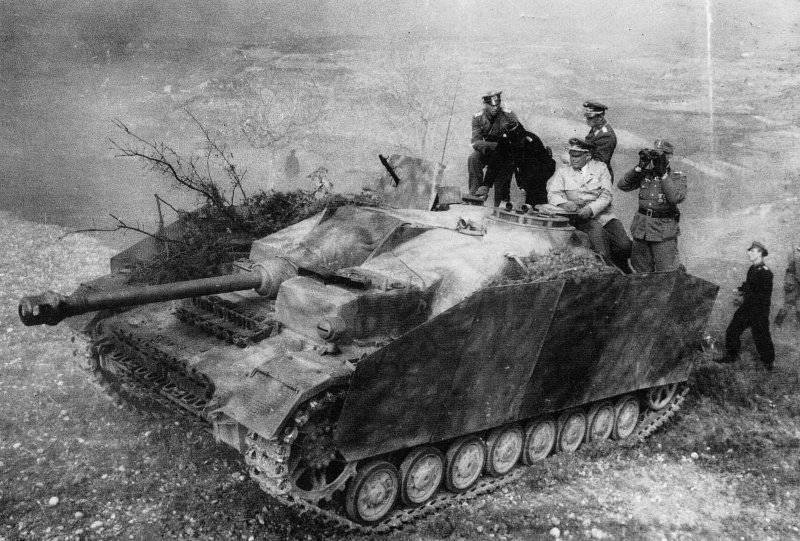
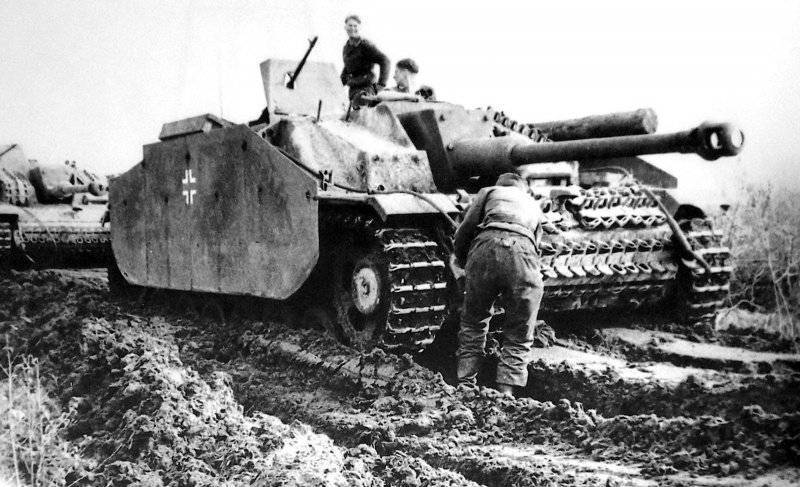
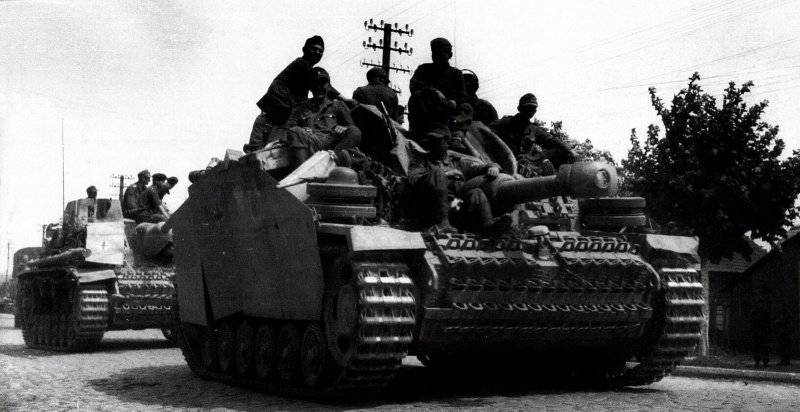
After the StuG III assault guns were armed with a long-barreled gun, they were turned into effective tank destroyers. In this capacity they were actively used on all fronts until the last days of the war. In the combat biography of StuG III there are many glorious pages. For example, at Stalingrad at the beginning of September 1942, the 244 Battalion of the Assault Artillery battalion (commander chief vakhmist Kurt Pfrendtner) destroyed 20 Soviet tanks for 9 minutes, and the crew commanded by Horst Naumann, who went to 184 battalion bracers, put a marching master battalion. 01.01.1943 destroyed 04.01.1943 Soviet vehicles during the battles of Demyanskom. The most famous ace of assault artillery of the SS troops is considered to be the SS assault gunführer Walter Knip, commander of the Second Assault Artillery Battalion of the tank division "Das Reich". His unit between 12 and 05.07.1943 destroyed the Soviet army’s 17.01.1944 tanks. Perhaps these figures are overestimated, but the fact that when using competent tactics and in the right hands, the assault guns of the ACS of the StuG III, or more precisely the StuG 129 Ausf G, were extremely formidable weapons, is beyond doubt.
Another proof of the combat qualities of the self-propelled guns of the StuG III is that even in the 1950s, the Romanian, Spanish, Egyptian and Syrian armies were in service.
Tactical and technical characteristics of self-propelled artillery installation StuG III:
Base - medium tank PzKpfw III Ausf G;
Classification - assault gun;
Weight - 23900 kg;
Crew - 4 person;
Dimensions:
length - 6770 mm;
width - 2950 mm;
height - 2160 mm;
clearance - 390 mm;
Armor:
The forehead of the body is 80 mm;
Board - 30 mm;
Feed - 30 mm;
Roof - mm xnumx;
Armament:
The gun - StuK 40 L / 48, caliber 75 mm (shotgun 54);
The gun - StuK 40 L / 48, caliber 7,92 mm (ammunition 1200 ammunition);
Powerplant: engine Maybach HL 120TRM, carburetor, power 300 l. with. (220,65 kW);
Obstacle obstacles:
Wade depth - 0,80 m;
The width of the moat - 1,90 m;
Wall height - 0,60 m;
Maximum lift angle - 30 degrees;
Maximum speed on the highway - 40 km / h;
Power reserve on rocade - 95 km;
Cruising on the highway - 155 km.
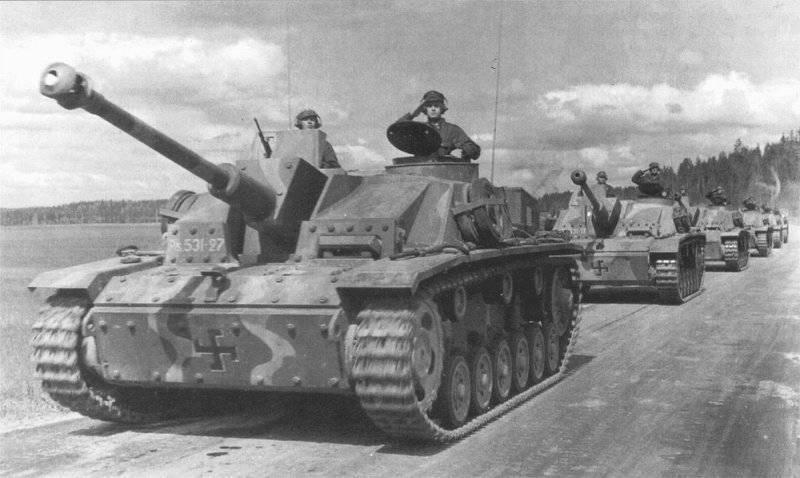
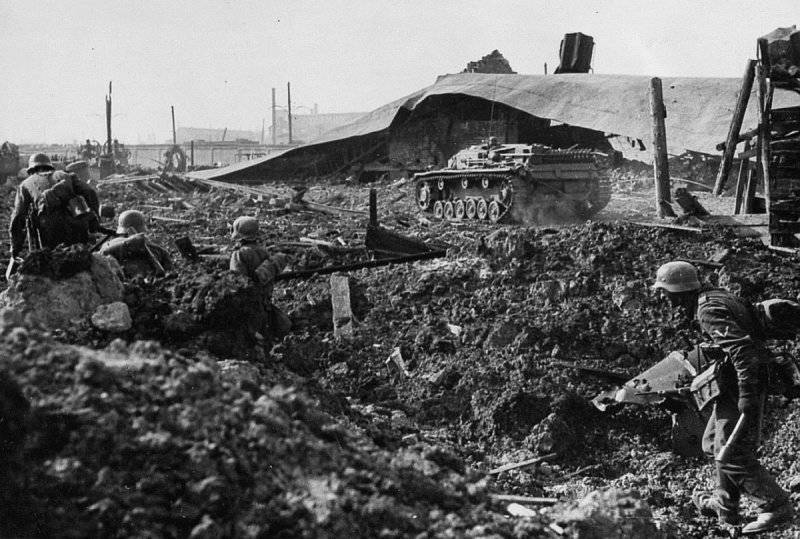
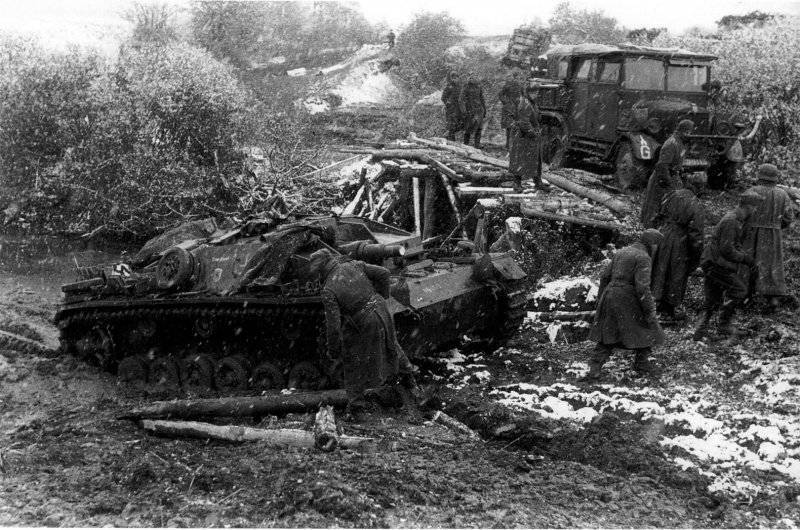
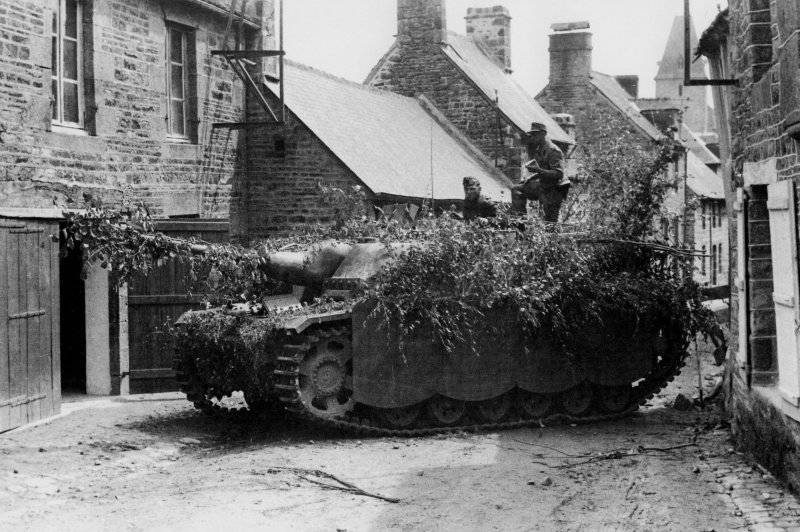
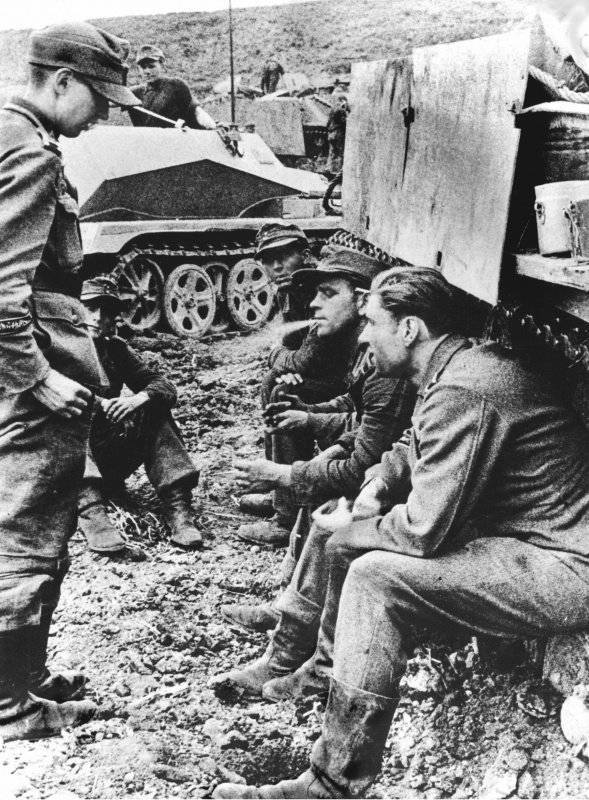
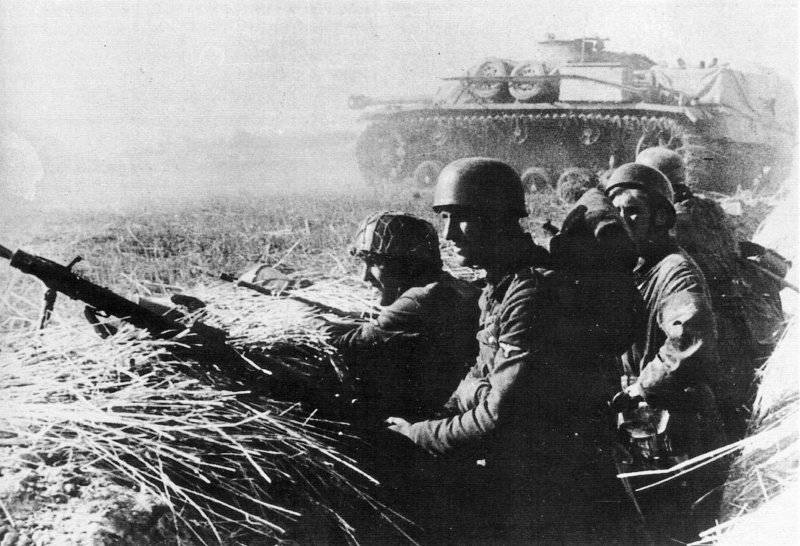
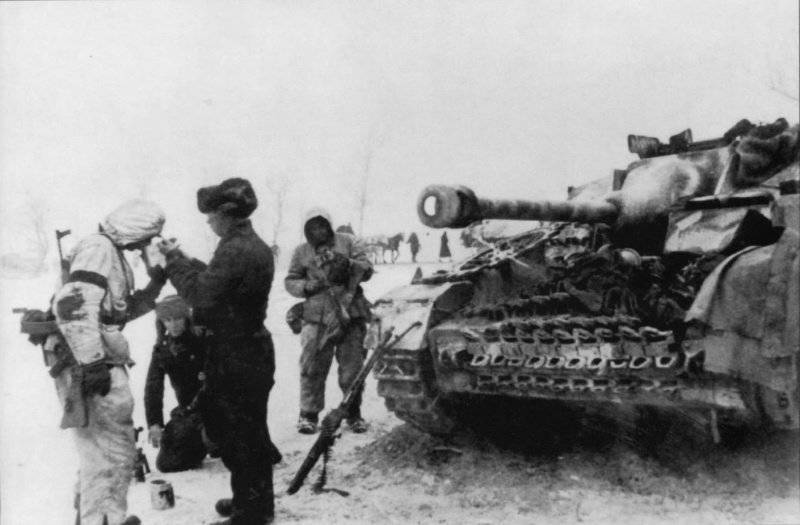
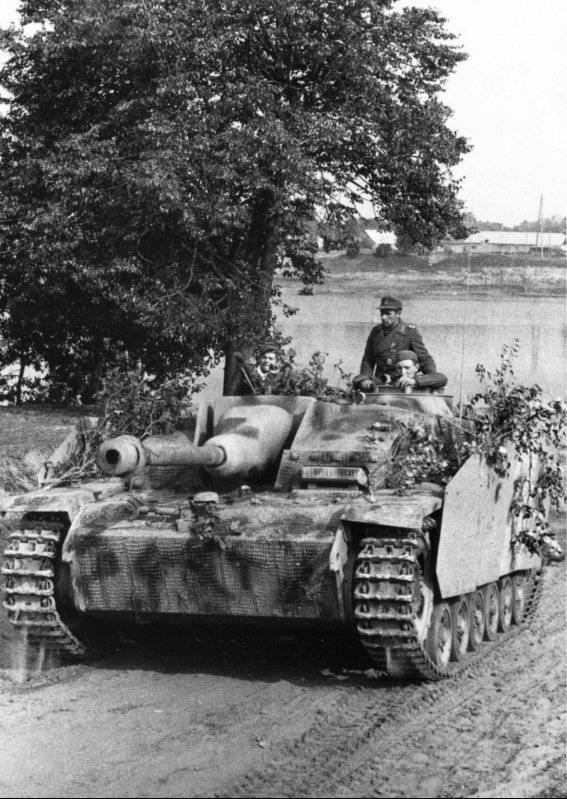
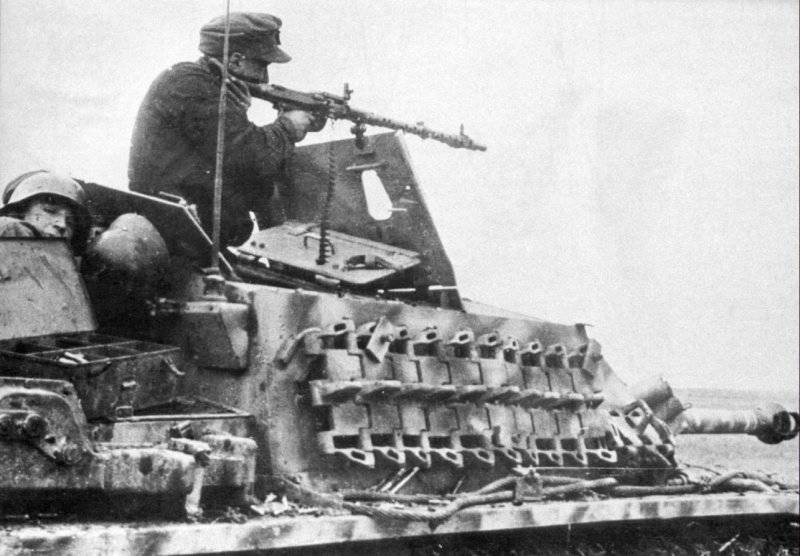
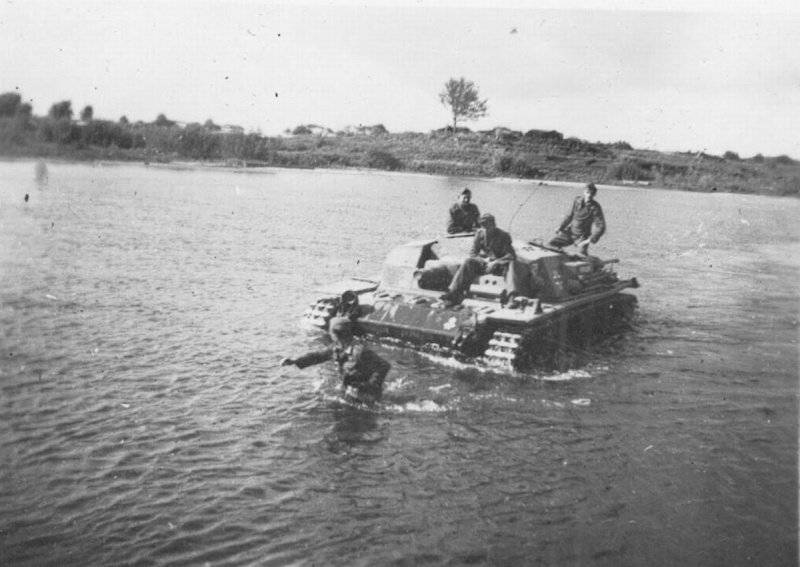
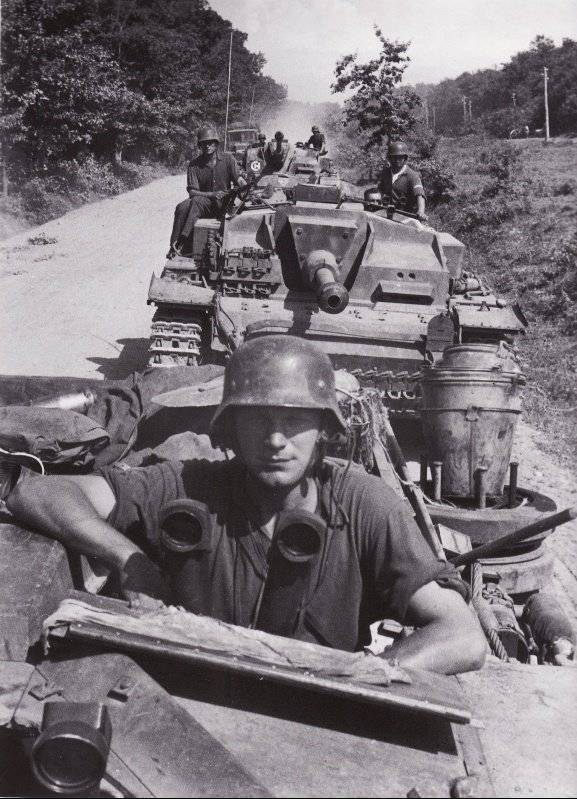
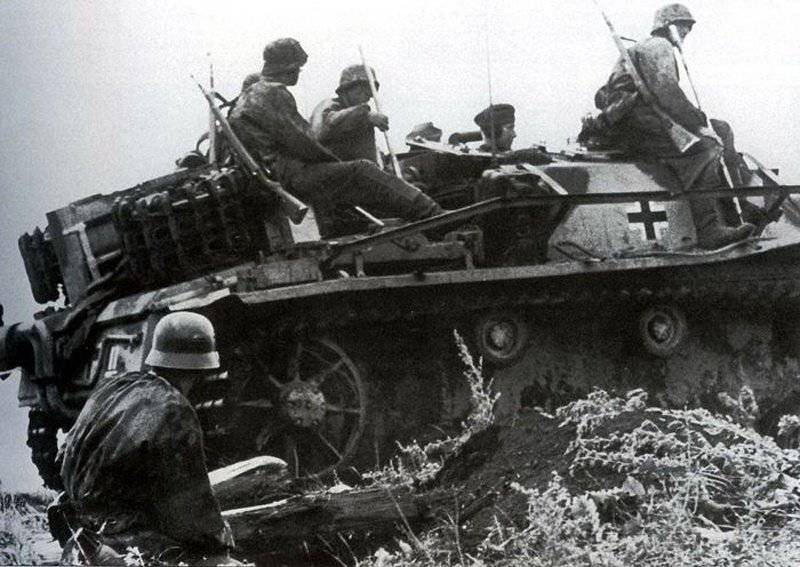
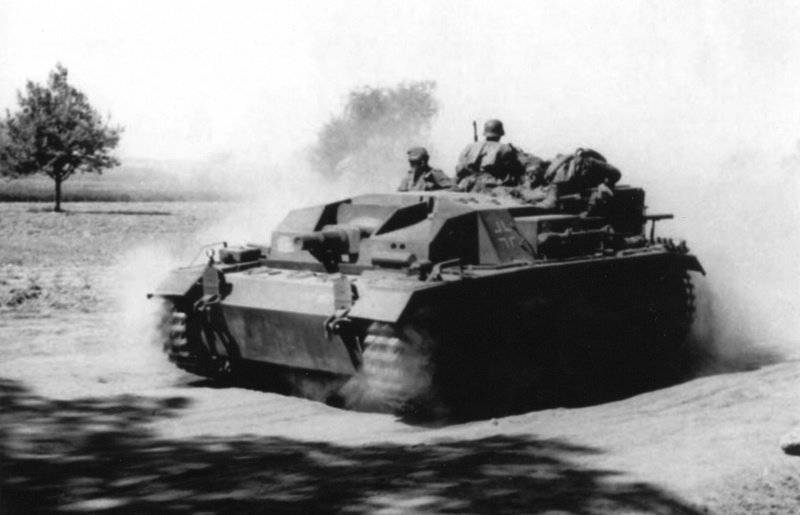
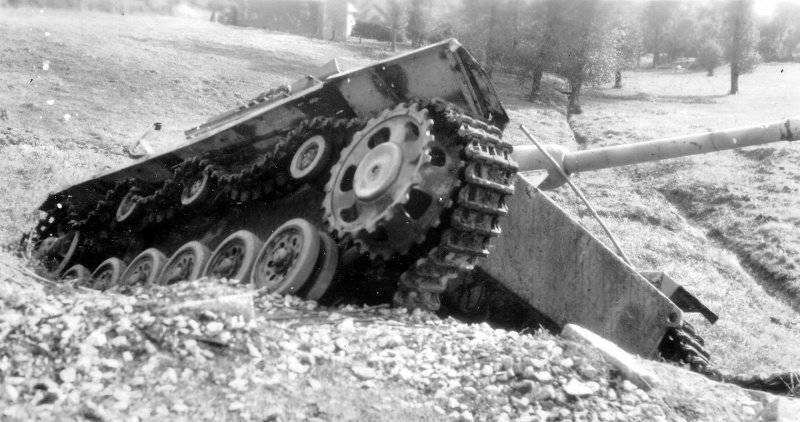
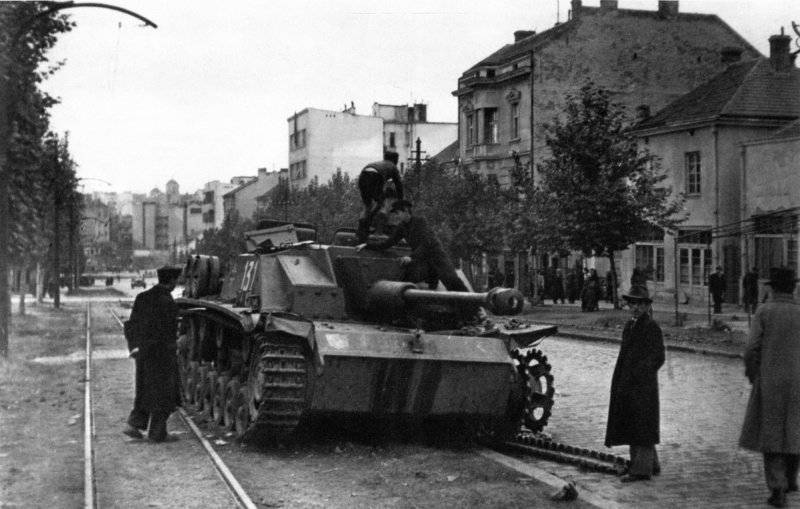
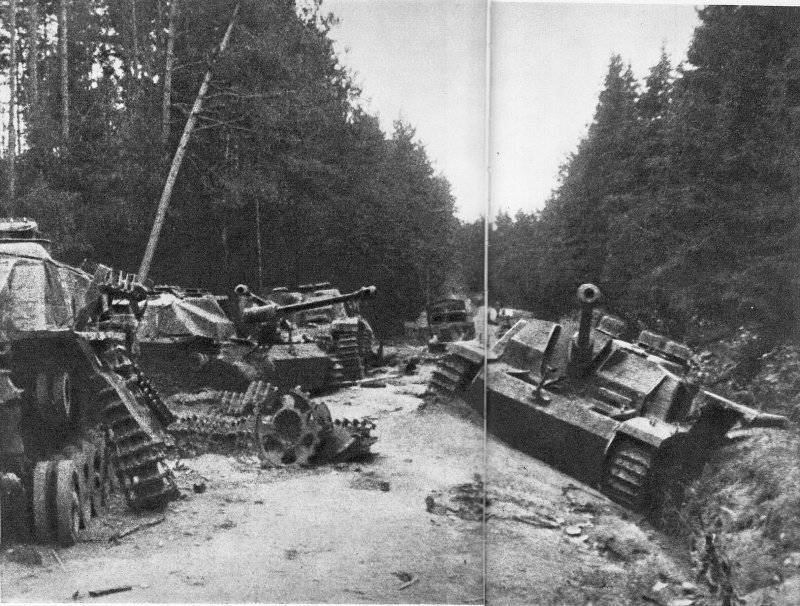
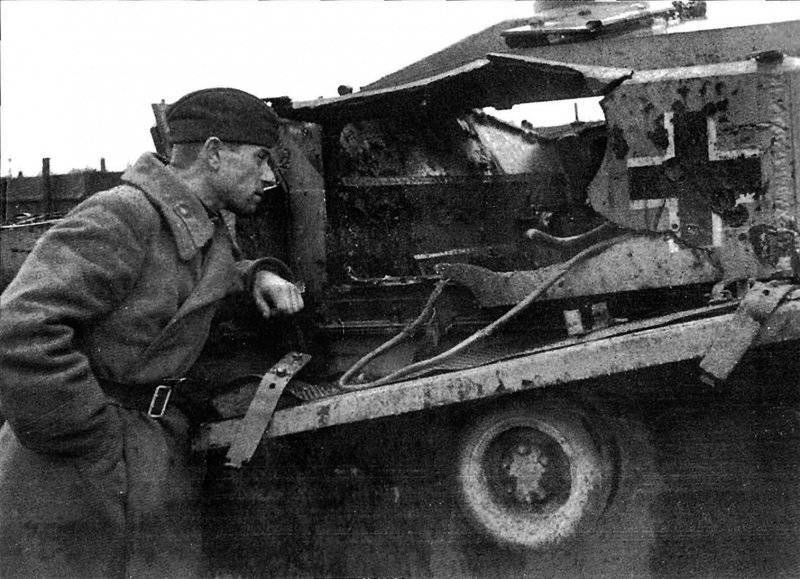
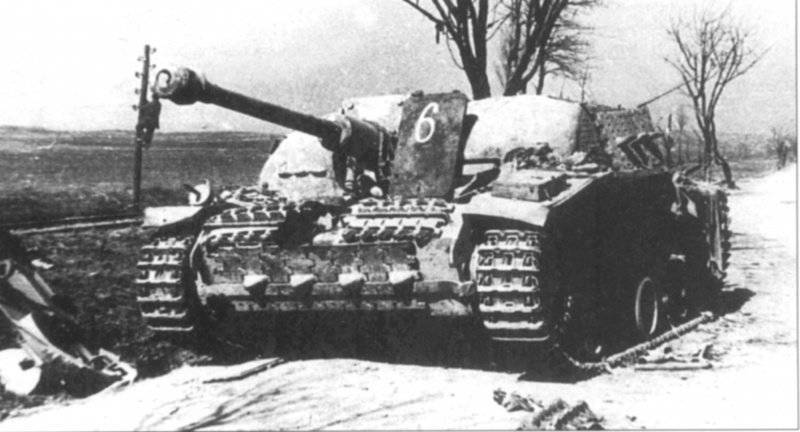
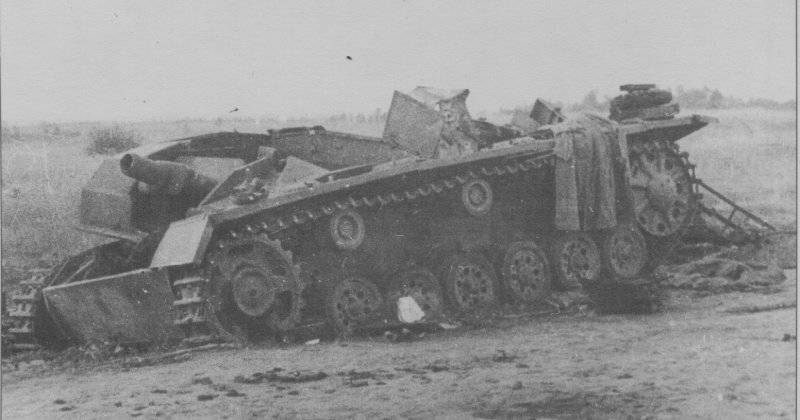
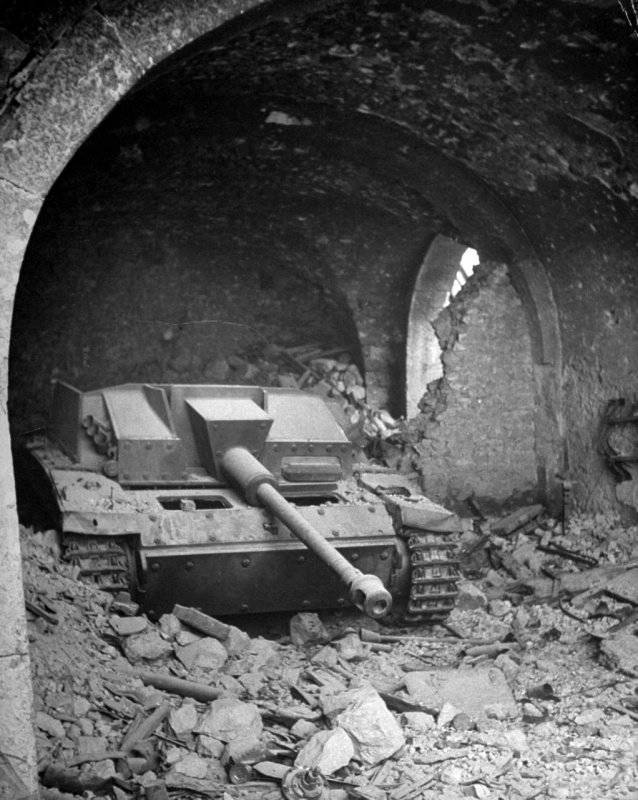
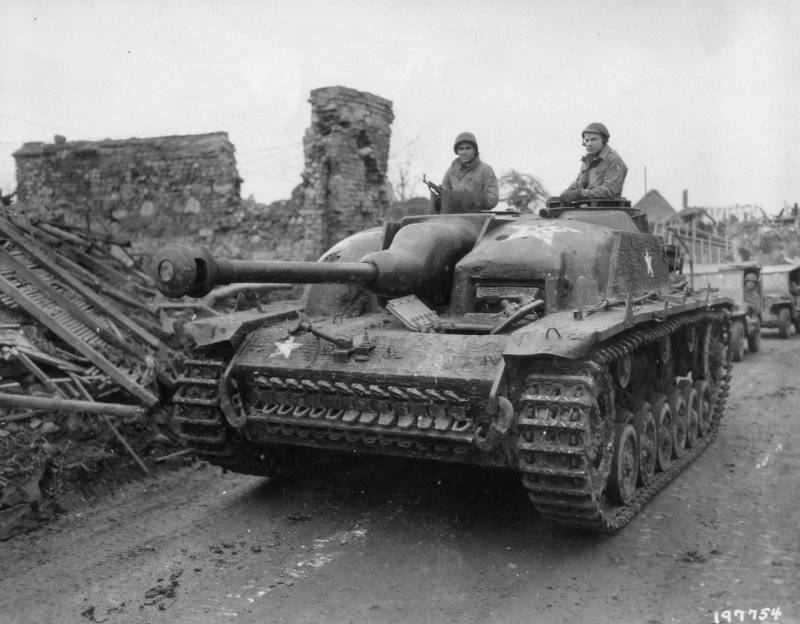
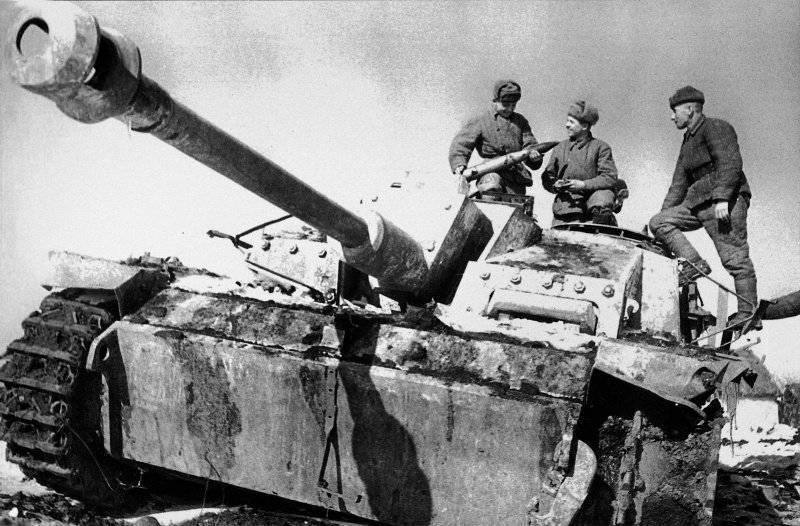
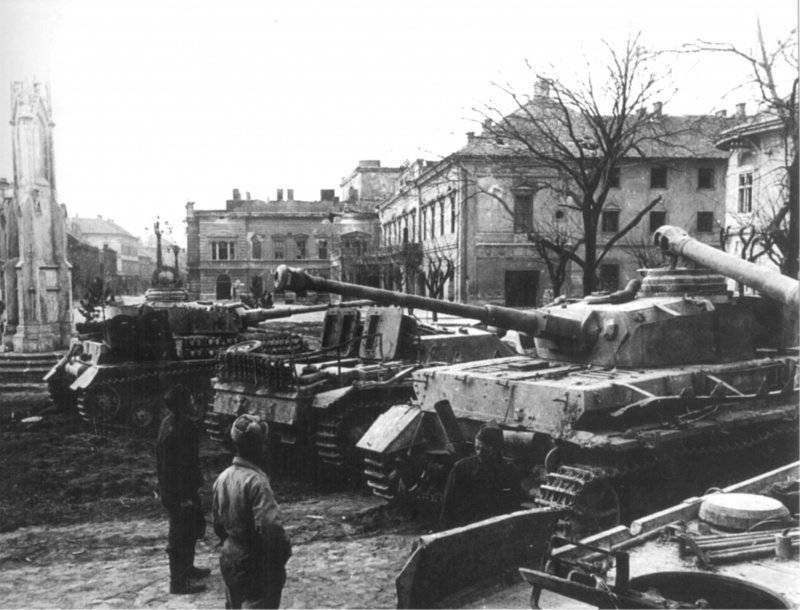
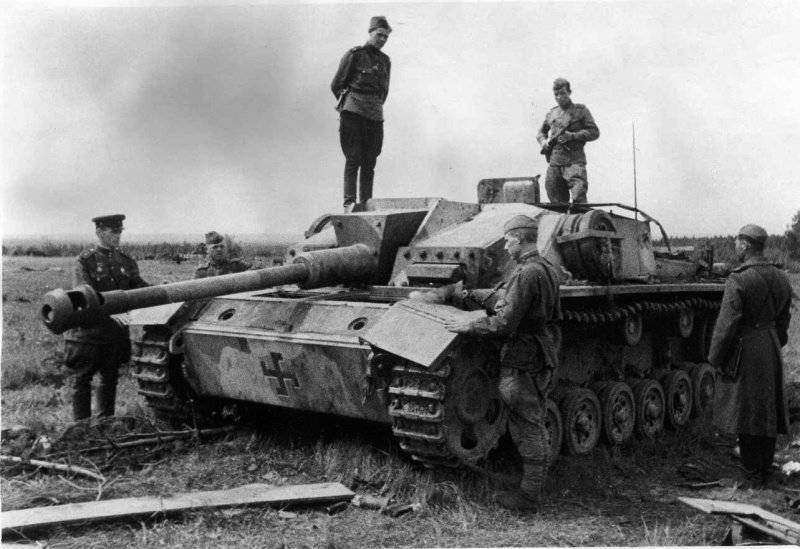
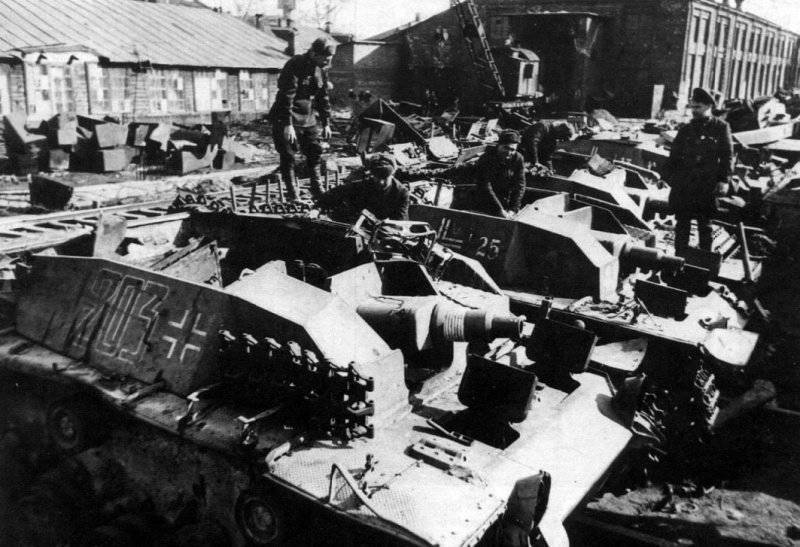
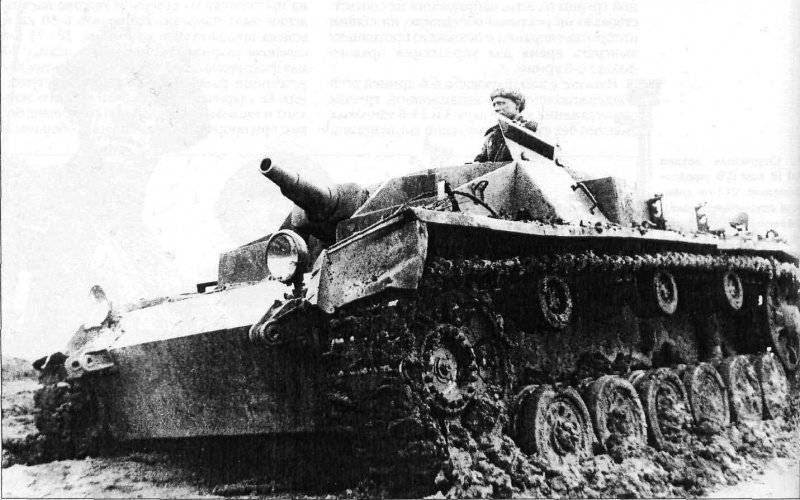
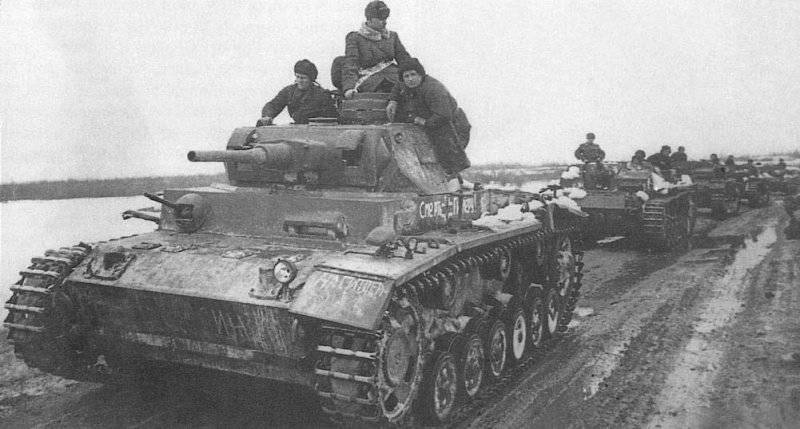
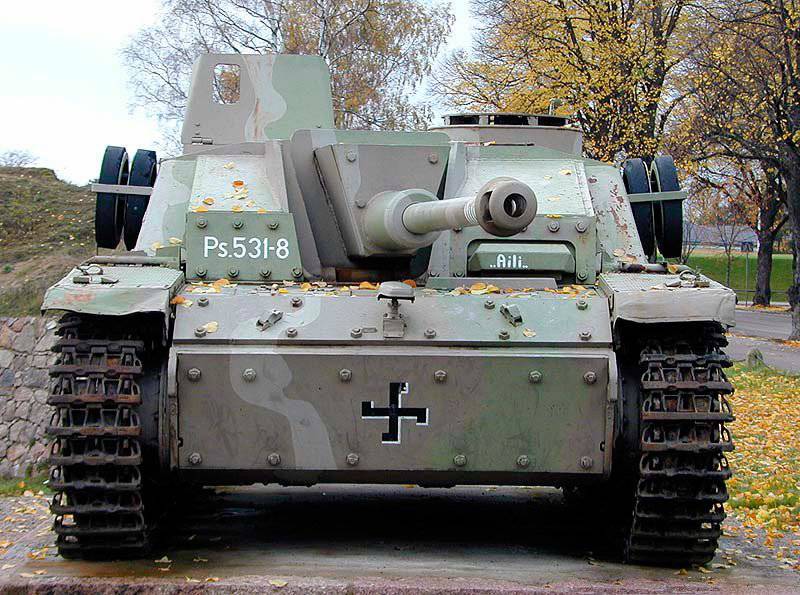
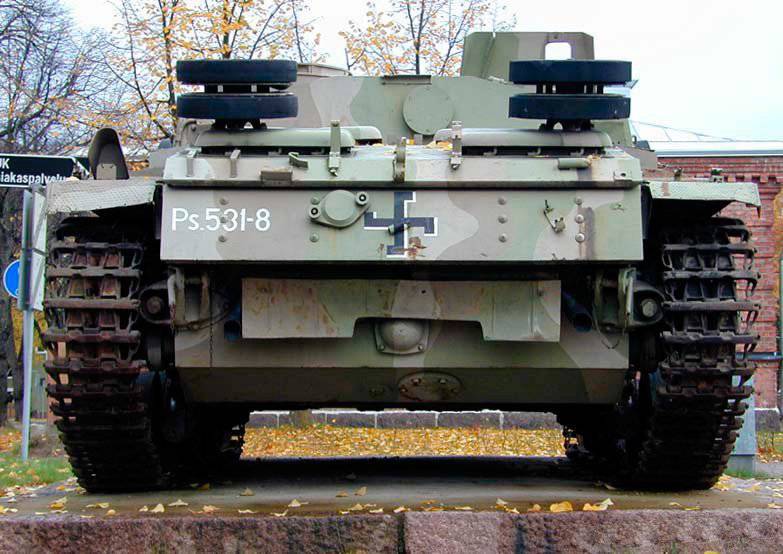
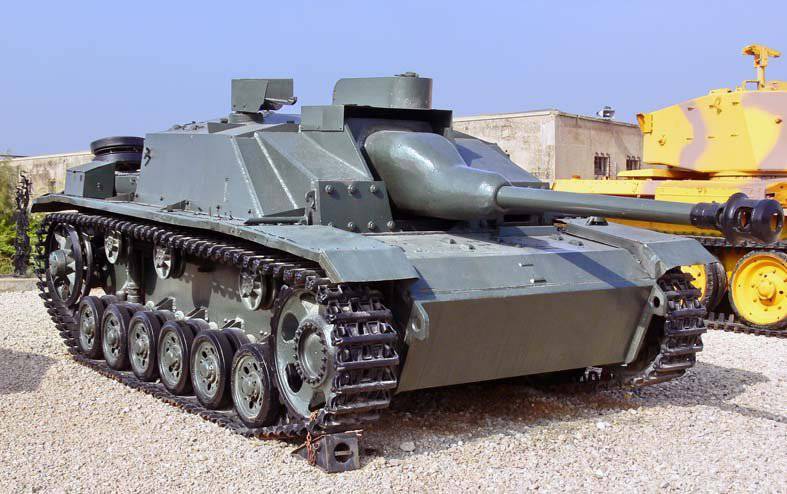
- http://waralbum.ru
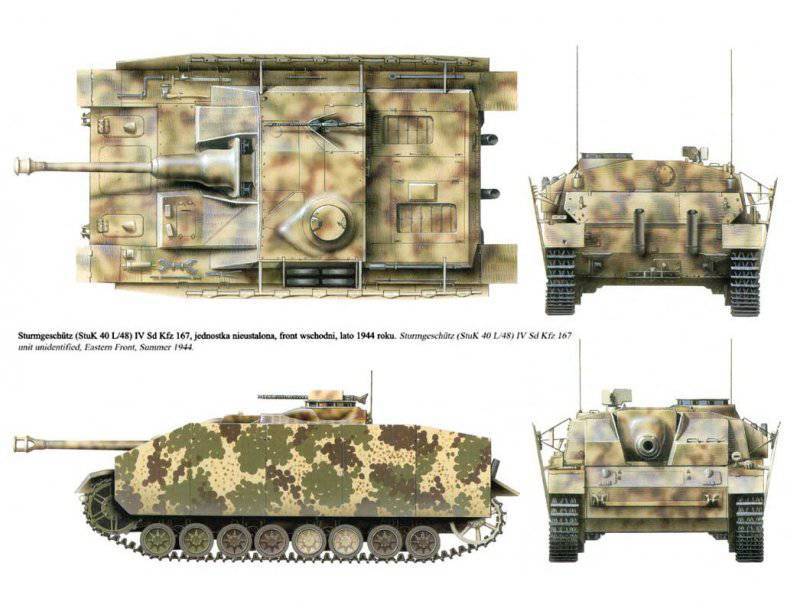
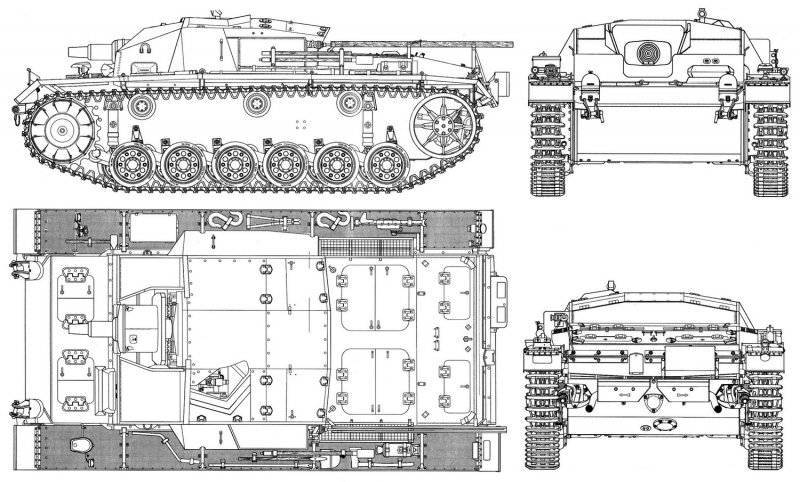
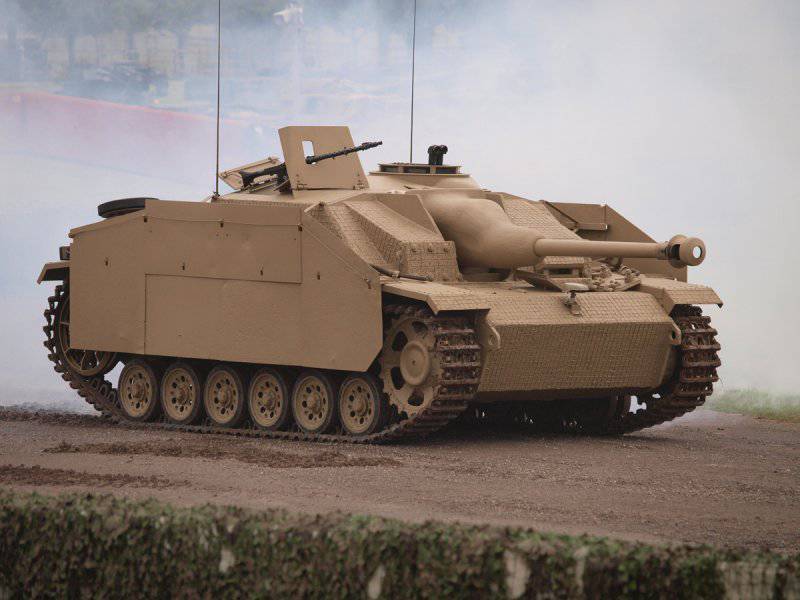
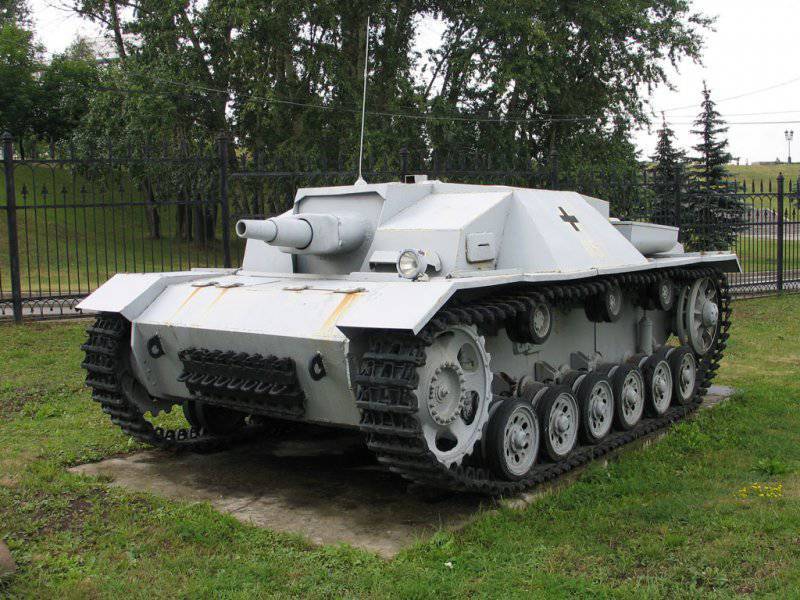
Information